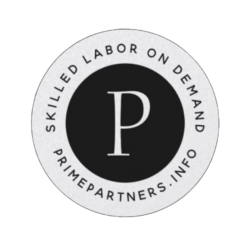Cooling System Engineer Interview Questions and Answers
Overview of Required and Recommended Certifications, Educational Background, and Industry Qualifications
Educational Background
- Bachelor’s Degree: Typically, a Cooling System Engineer should have at least a bachelor’s degree in mechanical engineering, thermal engineering, or a related field. This foundational education provides essential knowledge in thermodynamics, fluid mechanics, and heat transfer, which are crucial for this role.
- Master’s Degree: A master’s degree in a specialized area such as HVAC systems, thermal engineering, or energy systems can be advantageous, offering deeper insights into advanced cooling technologies and system design.
Recommended Certifications
- Professional Engineer (PE) License: Obtaining a PE license can significantly enhance a candidate’s profile by demonstrating a high level of competency and commitment to the field.
- Certified Energy Manager (CEM): This certification is beneficial for those involved in energy management and optimization of cooling systems.
- HVAC Certification: Certification from recognized bodies like ASHRAE (American Society of Heating, Refrigerating and Air-Conditioning Engineers) can validate expertise in HVAC systems.
- LEED Certification: For engineers involved in sustainable building projects, LEED certification demonstrates knowledge of green building practices and principles.
Industry Qualifications
- Experience with CAD Software: Proficiency in CAD software like AutoCAD or SolidWorks is often required for designing and analyzing cooling systems.
- Knowledge of Industry Standards: Familiarity with standards such as ASHRAE standards and ISO 50001 for energy management is crucial.
- Project Management Skills: Experience in leading projects can be an advantage, as it demonstrates the ability to manage complex system implementations.
Interview Questions and Answers
Technical Questions
1. Explain the principles of thermodynamics that are critical in cooling system design.
Answer:
- First Law of Thermodynamics (Conservation of Energy): This principle is crucial as it states that energy cannot be created or destroyed, only transferred. In cooling systems, this is applied in the heat exchange processes.
- Example: In a refrigeration cycle, the work input to the compressor is converted to heat energy, which is then dissipated by the condenser.
- Pitfall: Ignoring energy losses due to friction or heat leakage can lead to inefficient designs.
- Second Law of Thermodynamics (Entropy Increase): It highlights that energy systems tend to move towards increased disorder or entropy. This is vital for understanding the efficiency limits of cooling processes.
- Example: The necessity of removing heat from the evaporator to the surroundings is driven by this law.
- Adaptation: Engineers might use more efficient refrigerants or components to mitigate entropy increase.
- Third Law of Thermodynamics (Absolute Zero): While not directly applicable in most cooling systems, it underpins the theoretical limits of cooling.
- Considerations: How close a system can approach absolute zero can dictate the design and application of cryogenic cooling systems.
Follow-up Points:
- Discuss how these principles influence the design choices for different types of cooling systems, such as absorption chillers versus vapor-compression systems.
2. What are the main differences between a vapor-compression and absorption refrigeration system?
Answer:
- Vapor-Compression System:
- Principle: Relies on mechanical energy to compress refrigerant and cycle it through evaporation and condensation.
- Components: Compressor, condenser, expansion valve, evaporator.
- Efficiency: Typically more energy-efficient but requires electricity.
- Pitfalls: High operational costs and environmental concerns due to refrigerants.
- Absorption Refrigeration System:
- Principle: Uses heat energy (often waste heat) to drive the refrigeration cycle, using a refrigerant and absorbent pair.
- Components: Absorber, generator, condenser, evaporator, and pump.
- Efficiency: Lower COP (Coefficient of Performance) compared to vapor-compression but can be more sustainable.
- Adaptation: Suitable for places with abundant waste heat.
Real-World Scenario:
- Vapor-Compression: Ideal for residential and commercial applications where electricity is readily available and cost-effective.
- Absorption: Used in industrial settings with large amounts of waste heat or in remote areas where electricity is scarce.
Follow-up Points:
- Compare the environmental impacts of each system, and discuss recent advancements in refrigerants that affect these systems.
Behavioral Questions
3. Describe a time when you had to work under pressure to complete a cooling system project. How did you handle it?
Answer:
- Context: While working for a manufacturing company, we faced a tight deadline to install a new cooling system during a plant shutdown.
- Action: I organized daily stand-up meetings to track progress and quickly resolve issues. Delegated tasks based on team strengths, and ensured open communication channels.
- Outcome: Completed the project two days ahead of schedule, minimizing downtime and earning client satisfaction.
- Best Practices: Maintain clear communication, prioritize tasks, and be adaptable to changes.
Alternative Considerations:
- If unexpected equipment failures occurred, having contingency plans and backup systems can ensure project timelines are met.
- Encourage team collaboration and problem-solving workshops to address potential hurdles proactively.
Follow-up Points:
- Discuss how stress management techniques can improve team morale and productivity during high-pressure situations.
Situational Questions
4. If a client requests a cooling system design that is not feasible within their budget, how would you approach this situation?
Answer:
- Initial Assessment: Understand the client’s requirements and constraints thoroughly. Identify the critical elements of their request and areas where compromises can be made without sacrificing performance.
- Proposal: Present alternative solutions that align with their budget, such as using different materials or technologies that provide similar results at a lower cost.
- Negotiation: Highlight the long-term benefits of investing in quality components and energy-efficient systems, which may reduce operational costs.
- Outcome: Aim to reach a consensus that satisfies both budgetary constraints and functional requirements.
Real-World Example:
- A client wanted a high-efficiency cooling system with a limited budget. By suggesting a phased implementation and focusing on critical areas first, we delivered a system that met immediate needs and allowed for future upgrades.
Follow-up Points:
- Explore the importance of educating clients about the lifecycle costs of cooling systems versus initial capital expenses.
Problem-Solving Questions
5. How would you diagnose and address a situation where a cooling system is not maintaining the desired temperature?
Answer:
- Diagnosis Steps:
- Check Thermostat Settings: Ensure the thermostat is set correctly and functioning properly.
- Inspect Airflow: Examine vents and filters for blockages that could impede airflow.
- Refrigerant Levels: Measure refrigerant levels to ensure there are no leaks or insufficient charge.
- Component Functionality: Assess the performance of the compressor, condenser, and evaporator for any malfunctions.
- Action Plan:
- Immediate Actions: Clean filters, check ductwork, and recalibrate thermostats.
- Long-term Solutions: Implement regular maintenance schedules and consider system upgrades for older equipment.
Example Scenario:
- A commercial building had complaints about inconsistent cooling. Upon inspection, it was found that the air filters were clogged, and the refrigerant was low. After replacing filters and recharging the system, temperatures stabilized.
Follow-up Points:
- Discuss the implications of inadequate maintenance and the benefits of predictive maintenance technologies.
This comprehensive guide should prepare candidates not only to answer questions effectively but also to demonstrate a deep understanding of cooling systems engineering principles and practices.
More Infrastructure & Cooling Interview Guides
Explore more interview guides for Data Center positions.
Raised Floor Installer Interview Preparation
This guide equips job seekers with essential insights and strategies for excelling in a raised floor installer interv...
Data Center HVAC Technician Interview Preparation
This guide prepares job seekers for a Data Center HVAC Technician interview by focusing on key areas such as understa...
Environmental Monitoring Specialist Interview Preparation
This guide prepares job seekers for an Environmental Monitoring Specialist interview by covering key topics such as d...
Cooling System Engineer Interview Questions and Answers
This guide provides a comprehensive collection of interview questions and answers tailored for Cooling System Enginee...
Precision Cooling Technician Interview Questions and Answers
This guide provides job seekers with a comprehensive set of Precision Cooling Technician interview questions and answ...
Recent Articles
Check out more articles from Best Electrician Jobs about getting hired inthe electrical industry.
Best Job Board for Electricians
Discover the best job board for electricians! Boost your career with insights on salaries, training, and growth!
Improve Your Electrician Job Postings for More Applicants
Discover how to improve your electrician job postings for more applicants! Boost your career with insights on salarie...
What is the Highest Paying Electrician Role?
Discover the highest paying electrician roles and how to prepare for them. Learn about the skills and certifications ...
Industrial Electrician Careers in California
From manufacturing plants to data centers, industrial electricians play a vital role in California's economy. Discove...
Security Technician Interview Questions and Answers
Security technicians are essential in protecting our modern world. Learn what to expect in your Security Technician i...
Featured Jobs
-

- Company
- Prime Partners
- Title and Location
- Cable Technician
- Wyoming, MI
- Employment Type
- FULL_TIME
- Salary
- $25.16-$32.59/HOUR
- Team and Date
- Commercial
- Posted: 04/17/2025
-

- Company
- Prime Partners
- Title and Location
- Apprentice Electrician
- San Diego, CA
- Employment Type
- FULL_TIME
- Salary
- $24-$37/HOUR
- Team and Date
- Commercial
- Posted: 04/17/2025
-

- Company
- Prime Partners
- Title and Location
- Security Alarm Installer
- Mesa, AZ
- Employment Type
- FULL_TIME
- Salary
- $25.81-$30.68/HOUR
- Team and Date
- Commercial
- Posted: 04/17/2025
-
- Company
- Jackson Healthcare
- Title and Location
- Journeyman Electrician
- Alpharetta, GA
- Employment Type
- FULL_TIME
- Salary
- $30.6-$35.86/HOUR
- Team and Date
- Commercial
- Posted: 04/17/2025
-

- Company
- Prime Partners
- Title and Location
- Journeyman Electrician
- Gilbert, AZ
- Employment Type
- FULL_TIME
- Salary
- $40-$55/HOUR
- Team and Date
- Data Center
- Posted: 04/17/2025
-

- Company
- Prime Partners
- Title and Location
- Voice & Data Technician
- Glendale, AZ
- Employment Type
- FULL_TIME
- Salary
- $23-$35/HOUR
- Team and Date
- Commercial
- Posted: 04/17/2025
Best Electrician Jobs
Ready to get started?
Stop worring about manpower. And get back to what you do best.
Best Electrician Jobs is for Everyone
At Best Electrician Jobs, we are dedicated to fostering an inclusive environment that values diverse perspectives, ideas, and backgrounds. We strive to ensure equal employment opportunities for all applicants and employees. Our commitment is to prevent discrimination based on any protected characteristic, including race, color, ancestry, national origin, religion, creed, age, disability (mental and physical), sex, gender, sexual orientation, gender identity, gender expression, medical condition, genetic information, family care or medical leave status, marital status, domestic partner status, and military and veteran status.
We uphold all characteristics protected by US federal, state, or local laws, as well as the laws of the country or jurisdiction where you work.
 Best Electrician Jobs
Best Electrician Jobs